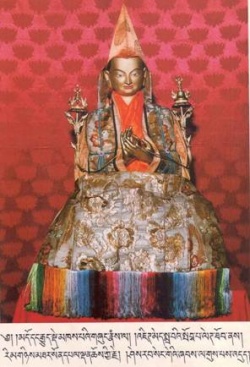Gyudmed Tantric Monastery
Jetsub Sherab Senge was a direct disciple of the legendary Je Tsongkhapa, founder of the Gelugpa sect of Tibetan Buddhism. Jetsun Sherab Senge was born in 1382 in a small village in the northern part of Tsang, a province of Tibet.
He was known to have had perfect moral conduct from childhood. After becoming a monk he studied under many eminent teachers the foremost of which being Je Tsongkhapa himself.
His mental and spiritual brilliance became renowned and he became known as a Saint. Near the end of Je Tsongkhapa’s life at a mass gathering at Sera Choden, Tsongkhapa asked his students; “Who is willing to create a system in which my teachings could thrive?” Overwhelmed by the enormity of such a task no one answered until finally Jetsun Sherab Senge arose and proclaimed that he would be committed to accomplishing such a task. It was at that point that Je Tsongkhapa appointed Sherab Senge to build the Gyudmed Monastery in Tibet 1433. The Gyudmed Monastery was founded in Tibet in 1433 by Lama Je Tsongkhapa. The Gyudmed Monastery in Tibet was the first Tantric monastery of the Gelugpa School and created in the style of Nalanda, Sera, Drepung and Gaden monasteries with one major difference, that it was established as a centre for the study of Tantra rather than Sutra.
Escape to India
After the national uprising against the Chinese in 1959, thousands of Tibetans fled, following HH Dalai Lama into exile in India. One hundred and fifty Gyudmed monks came in the first wave of Tibetan refugees and re-established the monastery temporarily in Northern India. They stayed there until 1972 when, with the guidance of HH Dalai Lama and the help of the government of Karntaka, they relocated permanently to Gurupura, in the state of [[Karnataka in South India. From that beginning of only 150 monks the monastery grew and has continued to grow keeping the rituals and cultural traditions alive. Over the years the number of monks has increased from 150 to over 1000.
see also; Gyuto Order
